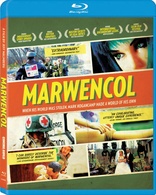Marwencol Blu-ray Movie
HomeMarwencol Blu-ray Movie 
Cinema Guild | 2010 | 83 min | Not rated | Apr 12, 2011Movie rating
7.1 | / 10 |
Blu-ray rating
| Users | 0.0 | |
| Reviewer | 4.0 | |
| Overall | 4.0 |
Overview
Marwencol (2010)
After a vicious attacks leaves him brain-damaged and broke, Mark Hogancamp seeks recovery in "Marwencol", a 1/6th scale World War II-era town he creates in his backyard.
Starring: Mark HogancampDirector: Jeff Malmberg
| Documentary | 100% |
Specifications
Video
Video codec: MPEG-4 AVC
Video resolution: 1080/60i
Aspect ratio: 1.78:1
Original aspect ratio: 1.78:1
Audio
English: DTS-HD Master Audio 2.0
Subtitles
None
Discs
25GB Blu-ray Disc
Single disc (1 BD)
Playback
Region free
Review
Rating summary
| Movie | 4.5 | |
| Video | 3.5 | |
| Audio | 3.5 | |
| Extras | 2.5 | |
| Overall | 4.0 |
Marwencol Blu-ray Movie Review
A one-sixth scale town at the intersection of art and therapy.
Reviewed by Casey Broadwater April 12, 2011Let me start with a disclaimer: If you love good documentaries—specifically, the Errol Flynn/Werner Herzog vein of transcendent true-story filmmaking
—seek out Marwencol immediately. Don’t read anything about it. Don’t hunt for reviews. Even skip down to the Audio/Video portion of
this review if you’re considering watching the film. Marwencol is better seen than described, so the less you know about it going in,
the better. Got it? If you’re still not sold, read on, but consider this a warning for mild spoilers ahead.
Still with me?
Broadly speaking, Marwencol is about a grown man—Mark Hogancamp—who plays with dolls. Director Jeff Malmberg starts with this wide-lens
view but zooms in progressively on his subject. Not only does Mark play with dolls, he has also built a fantastically detailed one-sixth scale world for
them to inhabit. Looking closer, he poses and photographs the dolls, creating complex, ever-evolving narratives that play out in series after series of
immaculately arranged shots. Closer still, we see that these stories are warped, parallel universe-style mirrorings of events from Mark’s own life. Is he
an artist? Yes, although he’s not entirely aware of it. Most would call Mark’s photos “outsider art,” but for him, they’re self-psychotherapy.
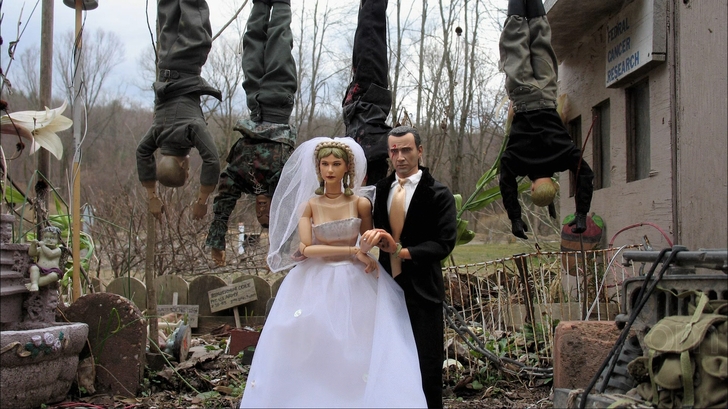
Anna and Hogie's wedding day...
In April of 2000, outside a bar in upstate New York, five men savagely beat Mark Hogancamp within an inch of his life, leaving him in a coma for nine days. When he awoke, the then-38-year-old couldn’t walk or talk, and had little recollection of his life before the incident. Once a raging, near- suicidal alcoholic, Mark emerged from his coma with zero desire for strong drink—a beneficial byproduct of amnesia—yet this was the only positive outcome of his debilitating rebirth. Learning to function again was a long, hard, and expensive process, and when his insurance money ran out, Mark was forced to find alternative means of therapy. Using scraps of wood, dollhouse furniture, and model kits from his local hobby shop, Mark turned his trailer park backyard into a one-sixth scale WWII-era Belgian town populated by articulated G.I. Joes and Barbie dolls, many of whom are named after—and look like—Mark’s few friends and acquaintances. He deemed the town itself “Marwencol,” a portmanteau combining Mark’s name with those of two of his longtime crushes: Wendy, a bartender he used to work with, and Colleen, his blond—and married—next door neighbor. Indeed, women are somewhat fetishized in this pint-sized village. Mark’s own miniature avatar—Mark “Hogie” Hogencamp—is a downed Army pilot who stumbled into Marwencol and became the protector of twenty-seven Barbies who were left defenseless when, as Mark puts it, “the SS came in there and killed all the men.” After reinforcements arrived, he—and I mean mini Mark—opened a bar that’s home to “The Ruined Stocking Catfight Club,” where girl-on-girl wrestling bouts are staged for the soldiers’ amusement. Along with helping Mark improve his motor skills—dressing and posing the figures takes patience—one of Marwencol’s purposes is seemingly to serve as a kind of wish-fulfillment fantasyland.
It’s also a place where Mark can safely reenact the tragic events of his own beating and find a sense of catharsis in an imaginary alternate outcome. The Nazi soldiers who frequently threaten Marwencol are clearly stand-ins for the thugs who literally kicked his face in, but here, Mark is rescued and comforted by the town’s female inhabitants, and the SS cronies are killed and strung up by their ankles. Some of Mark’s dioramas are disturbingly gory, with fake blood splattered everywhere, severed limbs, and plastic doll heads exploded from massive exit wounds. There’s a feeling of aggression released, but Marwencol is also home to its share of sweetness and sheer oddity. Mark’s Mini-Me finds love in the arms of Anna, a secret Russian princess, and he has a sturm und drang relationship with Deja, the Belgian Witch of Marwencol, a vampy, blue-haired seductress with a time machine made from an old VCR that ate one of big Mark’s best porno tapes. You can’t make this stuff up, but Mark does, staging elaborate scenarios and photographing them with an ancient Pentax with a broken light meter. Throughout the documentary, Mark talks about the happenings in Marwencol as if they were actual occurrences, and while he seems to understand the difference between his play world and “real” life, he prefers to live in this comforting universe of his own creation, where he’s in total control. When Mark takes his regular two-mile walk to the closest store, he pulls a toy Jeep behind him, loaded up with soldiers toting “the correct weapons with the most firepower.” You know, just in case.
Mark’s life—real Mark, not fake Mark—takes a strange turn when he’s “discovered” by a curious photographer, who sends some of Mark’s photos to Todd Lippy, the editor of Eposus Magazine. Impressed by the emotional quality and utter lack of wink-wink irony in Mark’s “work”—the photos are genuinely evocative—Lippy arranges a SoHo gallery showing of the photos and, essentially, turns Mark into a bonafide artist. As with any situation when an “outsider” is shepherded into the mainstream art world, we wonder about the ramifications. Will this affect Mark’s therapy? Is he being exploited? How will his newfound status change his life from here on out? Marwencol doesn’t necessarily answer these questions—Mark’s story is still being written—but, in a frank and bizarre revelation, we do learn why Mark was beat up in the first place, and why women and women’s clothing figure so largely in his fantasies. (I won’t give it away, but I will just say that we eventually get to see the softer side of Mark.) While it’s an overused simile, the film is like an onion, and director Jeff Malmberg peels back layer after layer of Mark’s psychology, revealing motivations, exposing complicated truths, and carving out insights about imagination and consciousness. And yet Mark, the accidental artist, remains a satisfying enigma.
I first saw Marwencol at last year’s Seattle International Film Festival, and during a Q&A session after the screening, Malmberg called up Mark and, with his permission, put him on speakerphone. Completely unselfconscious, the artist breathlessly recounted the latest elaborate happenings in Marwencol, the imaginary town that he continues to occupy. My first thought? Someone needs to team this guy up with Quentin Tarentino as a story consultant for an Inglorious Basterds prequel.
Marwencol Blu-ray Movie, Video Quality 
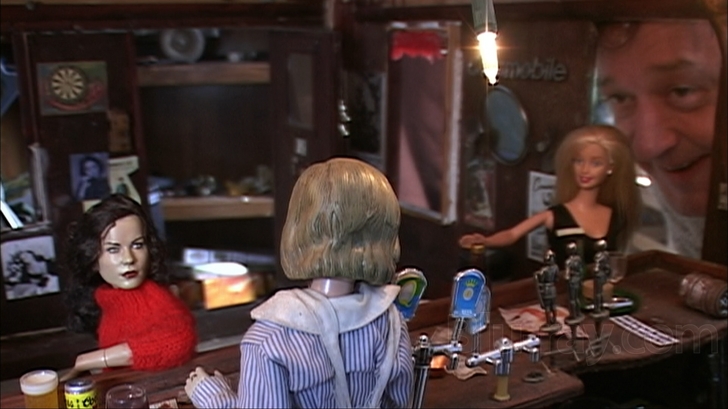
Filmed on a combination of prosumer-grade DVCam and Super-8, Marwencol was an unlikely candidate for a high definition home video release. That said, the film's 1080i/AVC-encoded transfer certainly seems true to source, which is as good as could be hoped. The video footage is upscaled from standard definition—it's soft, with little to no fine detail—but since this was how the film was shot, there's little that could be done. (Besides, it's not like you watch an indie documentary for its blazing, eye candy visuals.) Much of the film, however, is comprised of high definition stills from Mark's digital camera, and here's where Blu-ray becomes a benefit: the static shots show off the intricate detail in Mark's dolls, models, and building, from the fine threading of soldiers' uniforms to the carefully placed specks of mud on the side of a Jeep. Color is entirely realistic, and while far from vivid, it never looks weak or washed out thanks to decent black levels. The 8mm home movie-style material works great within the context of the film as well, and has an appropriately gritty, grainy appearance. There are hints of compression noise from time to time, a few instances of a slight aliasing, and some color fringing in the SD footage, but nothing to be too concerned about. In short, this may not be a sparkling Blu-ray presentation, but it definitely gives us Marwencol at its best.
Marwencol Blu-ray Movie, Audio Quality 
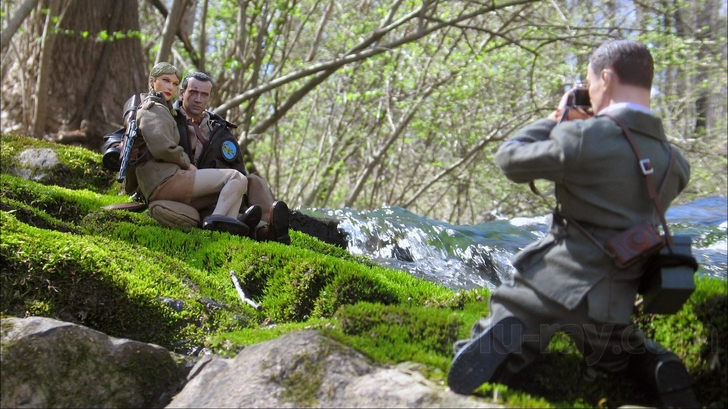
Like the film's picture quality, Marwencol's DTS-HD Master Audio 2.0 stereo track sometimes exhibits the limitations of its source material. Occasionally, a slight background hiss can be made out behind Mark's distinctive voice, and the track is rarely what you might call pristine, but the interviewees are always easy to understand, as the mix is pretty much limited to on-location recordings and a great ambient score by Portland-based experimental music project Ash Black Bufflo. Occasionally, Malmberg uses WWII-era pop tunes to great effect, and in general, the music sounds wonderful. My only complaint here is that the disc has no subtitle options whatsoever.
Marwencol Blu-ray Movie, Special Features and Extras 
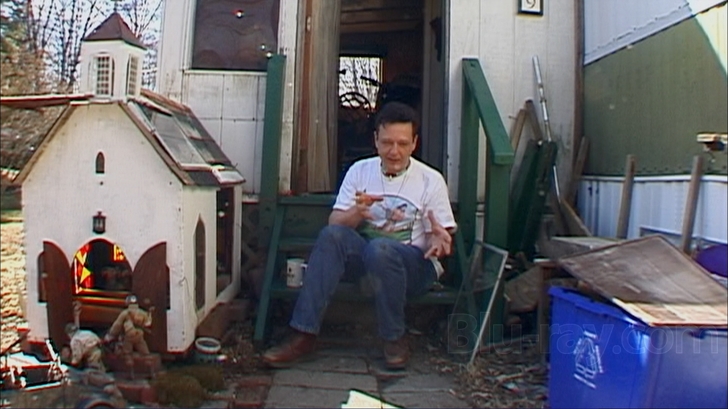
- More Stories from Marwencol (SD, 11:41): If you enjoy the film, you'll definitely want to check out these additional exploits from Marwencol, including a story line about Anna getting kidnapped.
- Deleted Scenes (SD, 19:02): Likewise, stick around for the lengthy deleted scenes to get more insight into Mark's mental state.
- Mark's Reaction to the Film (SD, 2:22): Mark watches the film for the first time with director Jeff Malmberg and gives his reactions to his mom over the phone.
- Mark's "Red Carpet" Premiere (SD, 1:01): Here we see Mark setting up a 1/6 scale "red carpet" premiere in front of the film's actual premiere at the IFC center in New York.
- Photo Gallery (1080p): A viewer-directed collection of thirty of Mark's photographs.
- Also Available from Cinema Guild: Includes trailers for Putty Hill, The Strange Case of Angelica, Guy and Madeline on a Park Bench, Around a Small Mountain, Sweetgrass, The Reaches of Agnes, Beeswax, and The Betrayal.
Marwencol Blu-ray Movie, Overall Score and Recommendation 
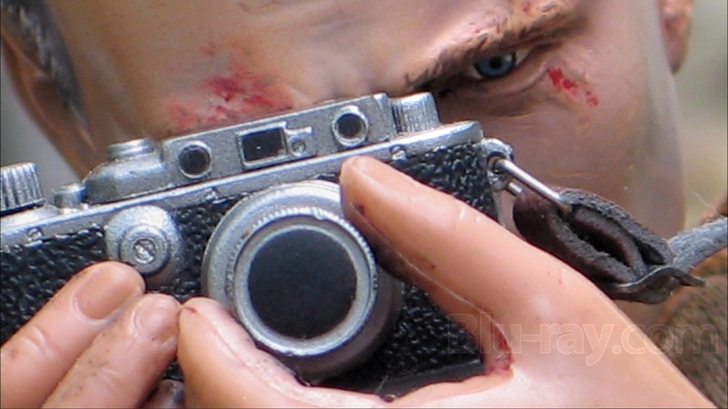
Marwencol is strange portrait of an even stranger artist, and easily one of the best documentaries of 2010. Given how the film was shot, I was kind of surprised that it even got a high definition release, but the sharp still photographs on Blu-ray make up for the muddy standard definition DVCam footage. Regardless of picture quality, this is a film to watch—a bizarre real-life story of therapy as unintentional art. Highly recommended!
Similar titles
Similar titles you might also like
(Still not reliable for this title)

The Wolfpack
2015

Let There Be Light
1946

Fahrenheit 11/9
2018

Studio 54: The Documentary
2018

RBG
2018

King Cohen: The Wild World of Filmmaker Larry Cohen
2017

I Am Not Your Negro
2016

For the Love of Spock
2016

Where to Invade Next
2015

Drunk Stoned Brilliant Dead: The Story of the National Lampoon
2015

Best of Enemies
2015

The Dog
2013

A Place at the Table
2012

Why We Fight
2005

The Gatekeepers
2012

This Is Cinerama
Deluxe Edition
1952

Waiting for "Superman"
2010

American Experience: Freedom Riders
2011

Grey Gardens
1975

And Everything Is Going Fine
2010
